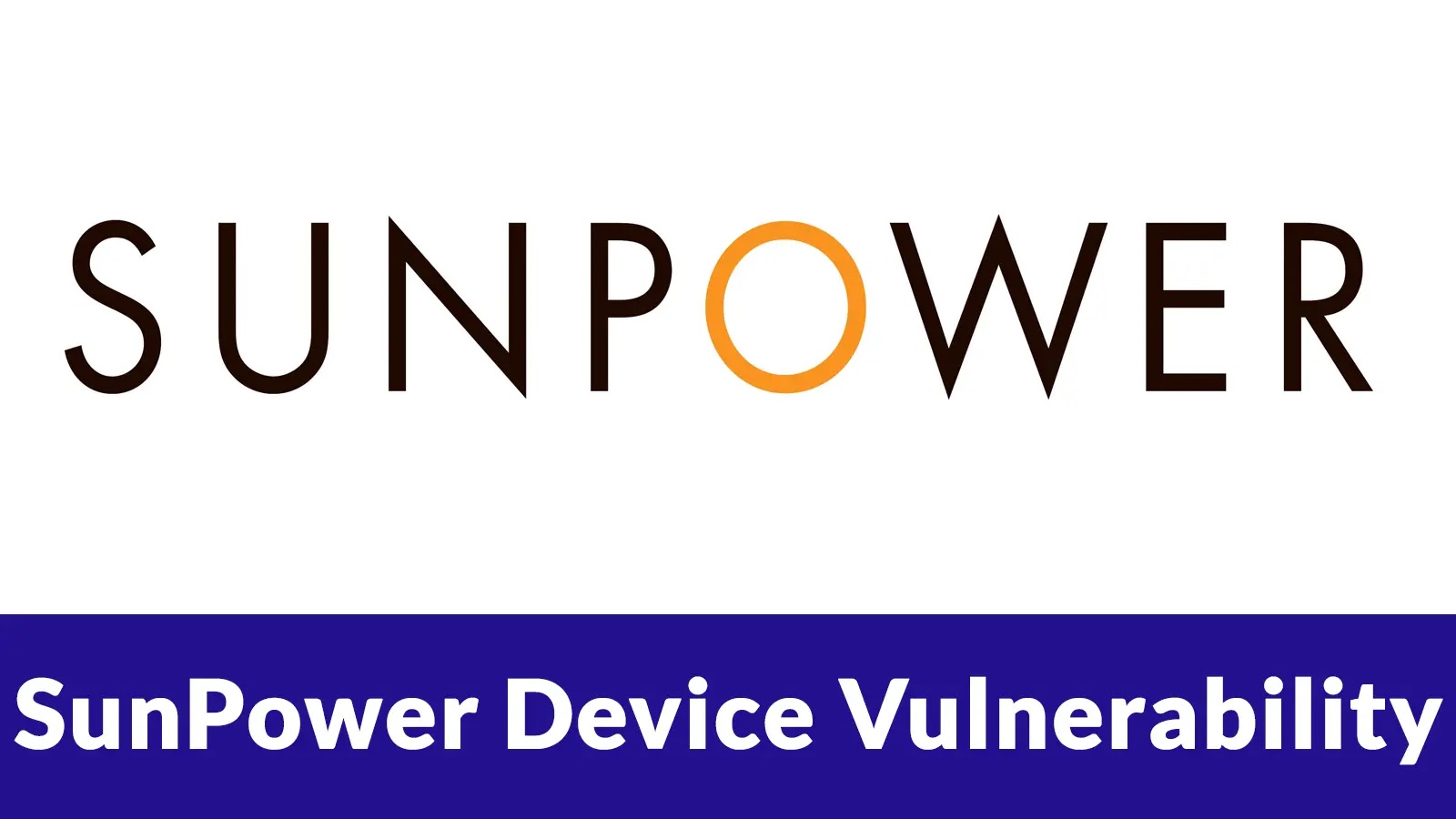
CISA Warns of Critical SunPower Device Vulnerability Let Attackers Gain Full Device Access
A critical vulnerability has rocked the solar energy sector, with the Cybersecurity and Infrastructure Security Agency (CISA) sounding an urgent alarm. SunPower PVS6 solar power devices, vital components in renewable energy infrastructure, are at severe risk due to a flaw that could grant attackers complete control. This isn’t just about system disruption; it’s about the potential for widespread operational impact and data compromise within critical energy systems.
The Critical Vulnerability: Hardcoded Credentials
The core of this significant security lapse lies within the device’s Bluetooth LE interface. CISA’s advisory highlights that the SunPower PVS6 devices utilize hardcoded credentials. This means a fixed username and password combination is embedded directly into the device’s software, making it trivial for an attacker to discover and exploit. Once these credentials are known, an unauthorized actor can gain full administrative access to the device.
This specific vulnerability has been officially cataloged as CVE-2025-9696. The “2025” in the CVE identifier indicates that while discovered and publicized in 2024, the advisory follows a future-dated convention, emphasizing the ongoing and future threat this vulnerability poses if unaddressed.
Understanding the Threat: Full Device Access and Its Implications
Gaining “full device access” is not merely a technical term; it represents a profound security breach. For SunPower PVS6 devices, this level of access could enable an attacker to:
- Manipulate Energy Output: Alter power generation, potentially causing grid instability or service disruptions.
- Exfiltrate Sensitive Data: Access operational data, performance logs, or even personal information if such data is stored or processed on the device.
- Install Malware: Deploy malicious software for further reconnaissance, establishing persistence, or launching attacks against other connected systems.
- Disable or Damage Devices: Render the device inoperable, leading to financial losses and operational downtime.
The implications extend beyond individual systems, potentially affecting energy grids, commercial installations, and residential power supplies, underscoring the critical nature of this vulnerability in an increasingly interconnected world.
Remediation Actions for SunPower PVS6 Owners
Immediate action is paramount to mitigate the risks posed by CVE-2025-9696. Device owners, IT professionals, and security teams managing SunPower PVS6 installations should prioritize the following:
- Apply Vendor Patches: SunPower is expected to release firmware updates addressing this vulnerability. Monitor official SunPower communications and apply all relevant security patches as soon as they become available. This is the most direct and effective remediation.
- Isolate Devices: Where possible, segment SunPower PVS6 devices onto isolated network segments, limiting their exposure to the broader internet or internal networks.
- Restrict Bluetooth Access: Disable Bluetooth functionality on the devices if not strictly required for operation or maintenance. If it must be enabled, ensure physical security of the devices to prevent unauthorized proximity access.
- Implement Strong Network Security: Utilize firewalls, intrusion detection/prevention systems (IDS/IPS), and robust access controls to prevent unauthorized network access to these devices.
- Regular Security Audits: Conduct frequent security assessments and penetration tests to identify and address potential weaknesses before they can be exploited.
- Review Device Configurations: Ensure that all unnecessary services and ports are disabled on the PVS6 devices, following the principle of least privilege.
Tools for Detection and Mitigation
While direct patching is the primary solution, certain tools and practices can aid in detecting potential exploitation attempts or bolstering overall security:
| Tool Name | Purpose | Link |
|---|---|---|
| Nmap (Network Mapper) | Network discovery and port scanning to identify open ports or services on SunPower devices. Can help identify Bluetooth LE services. | https://nmap.org/ |
| Wireshark | Network protocol analyzer to capture and inspect Bluetooth LE traffic, potentially identifying suspicious communication patterns (though encrypted). | https://www.wireshark.org/ |
| IDS/IPS Systems | Intrusion Detection/Prevention Systems can monitor network traffic for indicators of compromise or known attack signatures targeting the PVS6. | (Vendor Specific – e.g., Snort, Suricata, commercial solutions) |
| Vulnerability Scanners (e.g., Nessus, OpenVAS) | Automated tools to scan for known vulnerabilities and misconfigurations on network-connected devices. | https://www.tenable.com/products/nessus, http://www.openvas.org/ |
Protecting Critical Infrastructure
The incident surrounding the SunPower PVS6 vulnerability underscores the continuous challenges in securing operational technology (OT) and industrial control systems (ICS), particularly as they become more integrated with IT networks. Hardcoded credentials represent a fundamental security flaw that should be eliminated through secure development practices and rigorous testing. Proactive threat intelligence from agencies like CISA is vital for the timely dissemination of information and coordinated response. Organizations reliant on such devices must maintain strong security postures, apply updates diligently, and segment networks to minimize attack surfaces.





